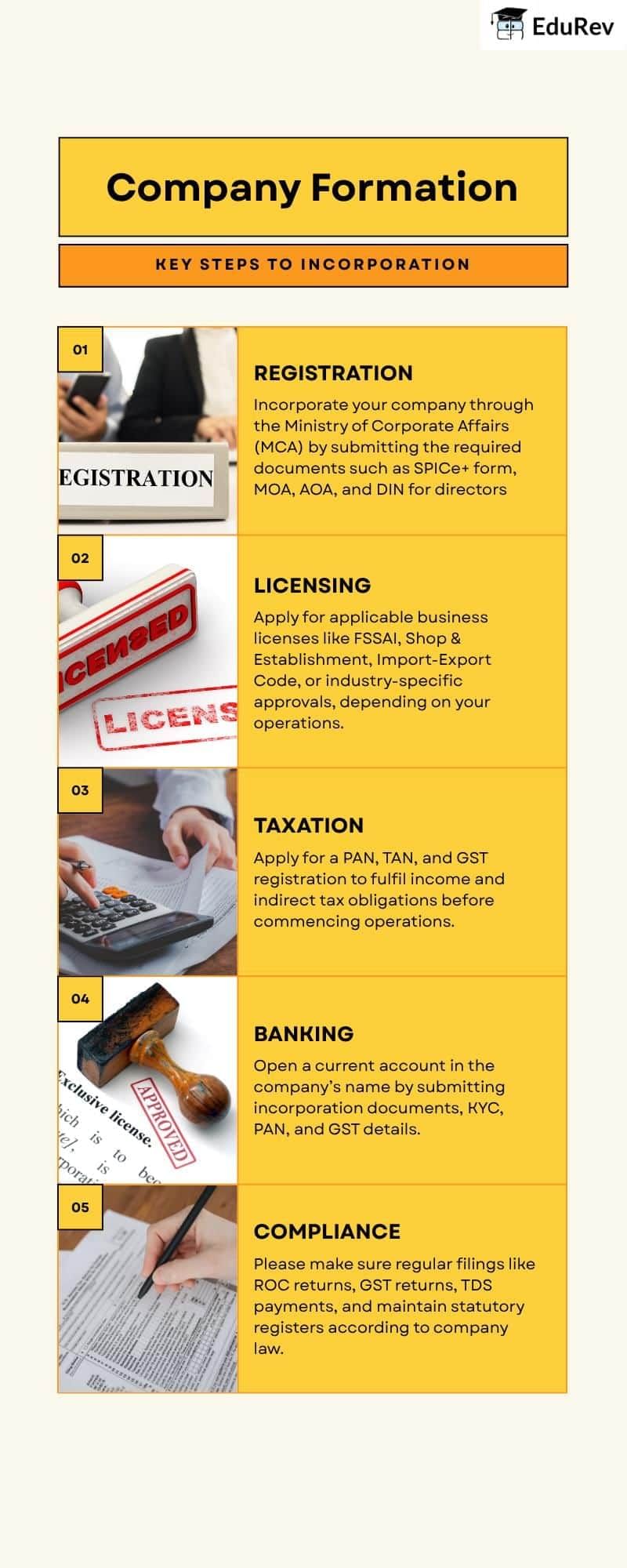Commerce Exam > Commerce Notes > Business Studies (BST) Class 11 > Infographic: Formation of a Company
Infographic: Formation of a Company | Business Studies (BST) Class 11 - Commerce PDF Download

The document Infographic: Formation of a Company | Business Studies (BST) Class 11 - Commerce is a part of the Commerce Course Business Studies (BST) Class 11.
All you need of Commerce at this link: Commerce
|
38 videos|264 docs|28 tests
|
FAQs on Infographic: Formation of a Company - Business Studies (BST) Class 11 - Commerce
| 1. What are the initial steps involved in the formation of a company? |  |
Ans. The initial steps typically include choosing a company name, deciding on the type of business structure (e.g., sole proprietorship, partnership, corporation), and drafting a business plan. After that, you need to register the business with the appropriate governmental authority, obtain necessary licenses and permits, and open a business bank account.
| 2. What legal documents are required for company registration? |  |
Ans. The legal documents usually required for company registration include the Articles of Incorporation (or Articles of Association), business license application, Operating Agreement (for LLCs), and identification documents for the owners. Additional documents may vary based on the jurisdiction and type of business entity.
| 3. How do I choose the right business structure for my company? |  |
Ans. Choosing the right business structure involves considering factors like liability, tax implications, and management structure. Common options include sole proprietorships (simple but high personal liability), partnerships (shared responsibility), and corporations (limited liability but more regulatory requirements). Consulting with a legal or financial advisor can help make the best choice.
| 4. What is the importance of a business plan in the company formation process? |  |
Ans. A business plan is crucial as it outlines the company's goals, strategies, market research, financial projections, and operational plans. It serves not only as a roadmap for the business but also as a tool for attracting investors and securing financing.
| 5. Are there ongoing compliance requirements after a company is formed? |  |
Ans. Yes, ongoing compliance requirements may include filing annual reports, renewing licenses, maintaining accurate financial records, and adhering to tax obligations. Specific requirements can vary based on the company's structure and the jurisdiction in which it operates.
Related Searches




















